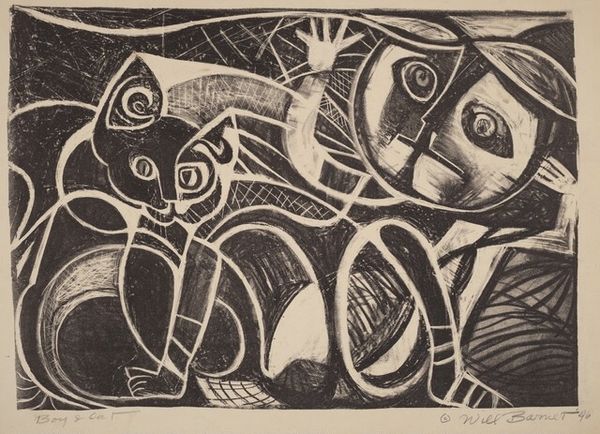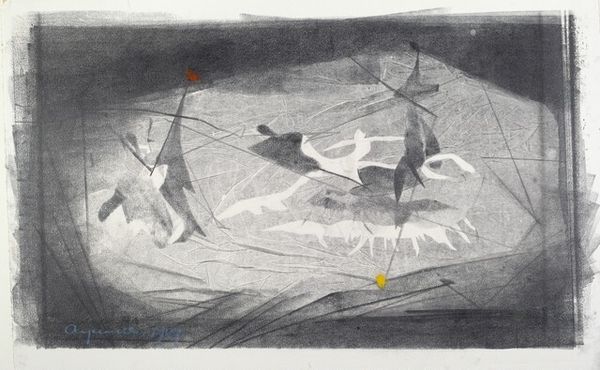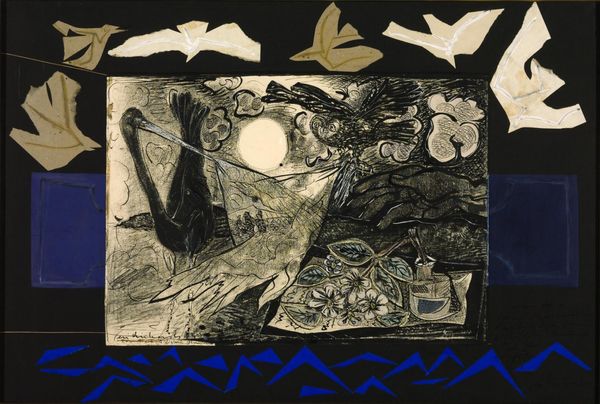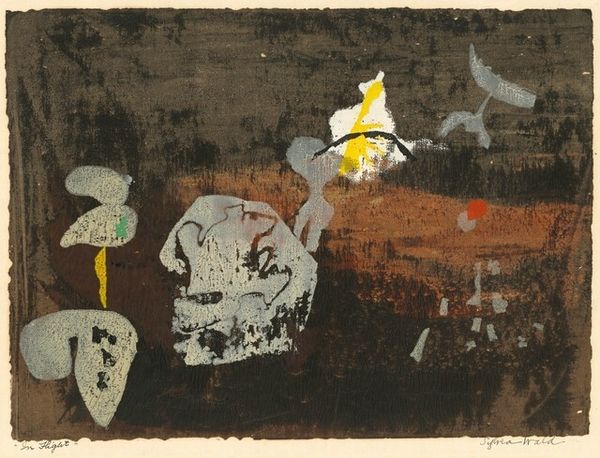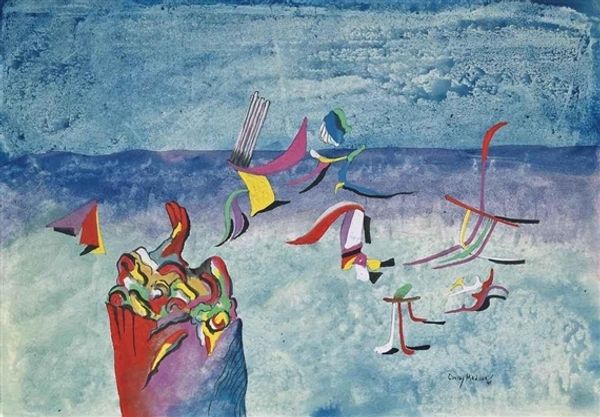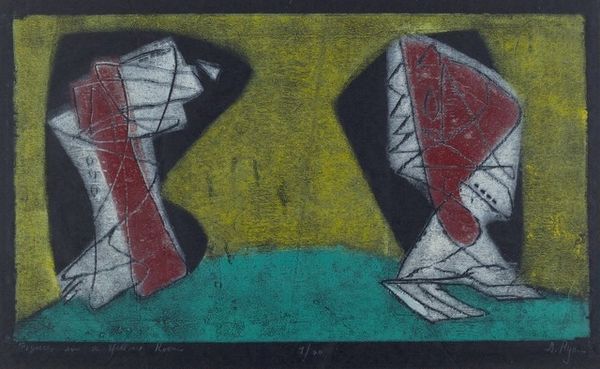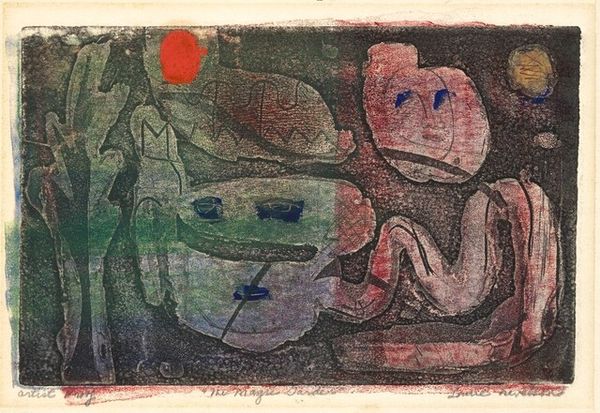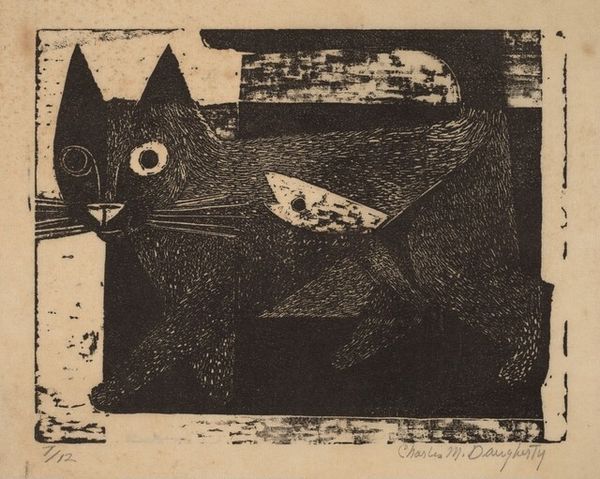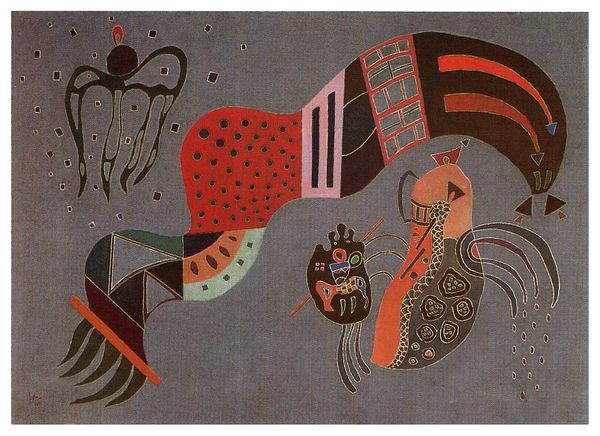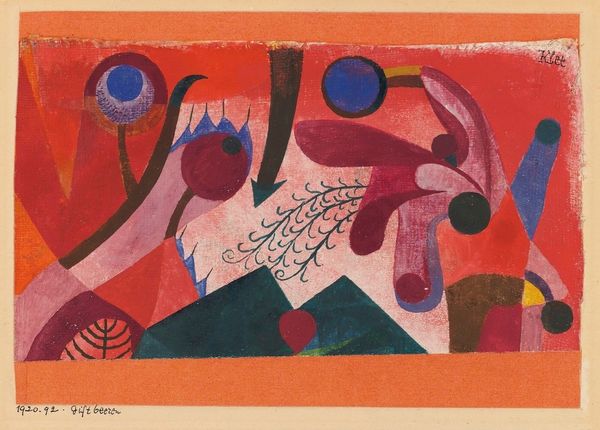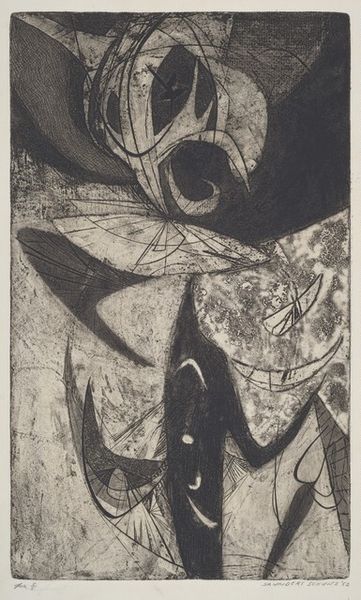
mixed-media, lithograph, print
#
mixed-media
#
lithograph
# print
#
landscape
#
geometric-abstraction
#
abstraction
#
mexican-muralism
#
modernism
Copyright: National Gallery of Art: CC0 1.0
Curator: Here we have Rufino Tamayo's "Aztec Landscape," a lithograph print with mixed-media elements, created in 1951. The piece beautifully blends abstraction with hints of recognizable forms. Editor: My first impression is one of haunting beauty. The colors are muted, almost melancholic, yet those pops of pink give it this strange, vibrant energy. There’s a palpable sense of place, but one filtered through a dream-like lens. Curator: Indeed. Tamayo was a key figure in Mexican muralism, although he diverged from its overt political narratives. "Aztec Landscape," for example, suggests a connection to Mexico's pre-Columbian past but in a symbolic, rather than literal way. Editor: Right, and the title does so much work here. "Landscape" makes you expect one thing, but what we get is this stylized, geometric interpretation. Those geometric shapes could be pyramids, or perhaps temples—it asks us to think about the construction of identity in the landscape, about imposing order, too. Curator: It speaks to a broader cultural reclamation present at the time. Mexican artists were grappling with their heritage, both celebrating and interrogating it through their art, often amid tensions of modernization. The lithographic printmaking process would’ve aligned the piece to artistic developments unfolding in America. Editor: The flying creatures, they feel significant. Maybe spirits? Are they birds? There’s also something vaguely machine-like in other areas. Tamayo seems to explore the intersection between indigenous myth and modern technology. I’m left wondering about power dynamics. Who and what gets to write a landscape’s future? Curator: Exactly. The work embodies this very push-and-pull dynamic, reflecting post-revolutionary Mexico searching for its place on the global stage while honoring its indigenous roots. You get it so right; the image challenges those cultural imperialisms imposed by more dominant, western paradigms. Editor: Absolutely. It's not just about picturesque representation. It’s an active interrogation, using modernist language to re-imagine cultural memory and belonging. That vivid moon, or is it a sun? Curator: It hovers with mystery doesn't it, signaling, maybe, the persistence of indigenous worldviews amidst the pressures of assimilation. Editor: Ultimately, Tamayo makes us reconsider whose landscape we are viewing. And encourages viewers to reckon with all who are involved. Curator: Reflecting on Tamayo’s vision reminds us how deeply art can engage with identity. Editor: It is the blend of familiarity and the fantastical that remains resonant to me.
Comments
No comments
Be the first to comment and join the conversation on the ultimate creative platform.
